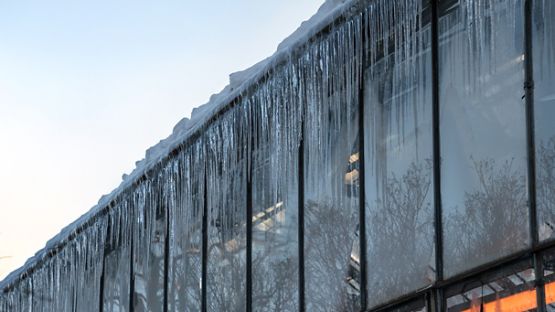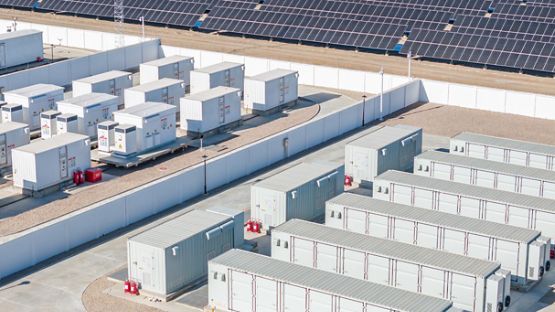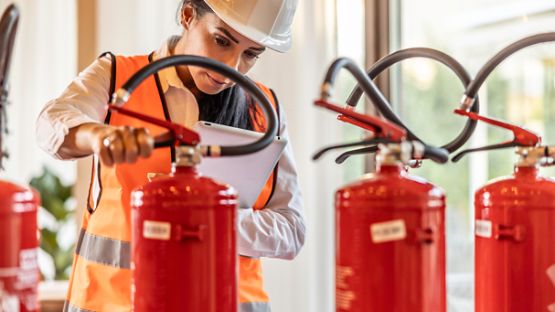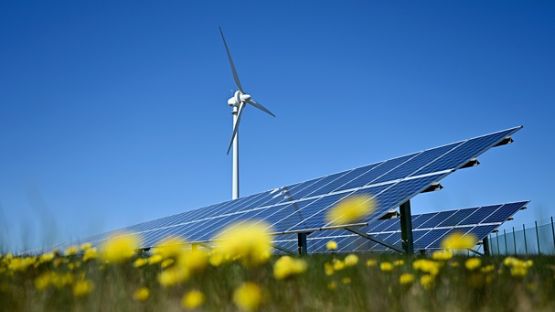Preventative maintenance is an important part of ensuring the long-term efficiency and dependability of your photovoltaic (PV) solar panels. Performing regular maintenance can identify and address potential issues before they become significant problems, reducing downtime and repair costs. It also helps to sustain optimal energy output, ensuring that solar panels operate at their highest capacity, contributing to energy savings, preventing the risk of a hazardous event and limiting the need for financing and warranty support.
Here are some elements to consider as you create and implement a preventative maintenance plan for your PV solar panels.
Routine inspections and cleaning
It was once believed that rain and snow would do the job of cleaning solar panels, but streaks, algae and dust can build up and decrease production by up to 30%.
Routine inspections, testing electrical connections and checking structural integrity for rust and corrosion are all elements of a predictive maintenance plan. A good starting point is to refer to manufacturer guidelines for inspections, cleaning, maintenance documentation and how to clear vegetation around the panel racking.
Scheduling and frequency of preventative maintenance is influenced by factors, such as equipment type, environmental conditions at the site (e.g., marine, snow, pollen, humidity, dust, wildlife) and warranty terms. Scheduled maintenance is often carried out at intervals to conform to the manufacturers’ recommendations, as required by equipment warranties.
Inverter maintenance
Inverter reliability is increasing for all types of inverters—10 to 20 year extended warranties and service plans are more common now. However, a preventative maintenance plan should account for inverter failure because it is one of the most frequent causes of PV system performance loss.
The best preventative maintenance for inverters is to perform the manufacturer’s required maintenance, including re-torquing current-carrying conductor fasteners (screw lugs on terminal blocks) and thermal imaging of electrical connections and components.
Since inverter air filters take in grass and dust during mowing, high winds, or dusty conditions, it’s recommended that you schedule a preventative filter swap/cleaning to follow grass cutting and weather events.
Vegetation management
If your PV solar panels are located on the ground among vegetation, it’s important to conduct regular, preventative maintenance to keep natural elements from interfering with their effectiveness and to mitigate the risks of grassfires or wildfires. Aggressive weeds can also damage panels and other equipment, leading to costly repairs.
Some of the most effective vegetation management measures include:
- Sheep grazing: Sheep have been proven to successfully maintain vegetation without damaging equipment. They can easily navigate under solar panels to graze on all parts of the land area and they consume any type of vegetation that grows near panels.
- Herbicides: By applying herbicides, unwanted plants and weeds can be controlled, preventing them from shading the panels, ensuring maximum sunlight exposure. Using herbicides reduces the need for manual or mechanical weeding, which can be labour-intensive and potentially damaging to the solar panel infrastructure.
- Mowing and landscaping: Regular mowing keeps grass and weeds at a manageable height. Landscaping techniques, such as planting low-growing ground covers or using mulch, can also help control weed growth and soil erosion.
Winter maintenance
During cold weather months, it’s important to take measures to protect solar panels. Considerations include:
- Snow removal: Regularly clear snow from the panels to prevent it from blocking sunlight and reducing energy production. Use soft tools like a brush or a specially designed snow rake to avoid scratching the panels.
- Ice management: Check for and carefully remove ice build-up on the panels and mounting structures, as it can add weight and potentially cause damage.
- Inspection: Conduct thorough inspections for any damage caused by snow, ice or wind. Look for cracks, loose connections, and other signs of wear that need repair.
- Preventative measures: Think about installing anti-icing and de-icing systems, such as heating elements, to minimize snow and ice build-up.
Emergency preparedness
Wildfires, hail, lightning, floods, tornados and other windstorms could all wreak havoc on your PV solar panel system. Protective measures include:
- Robust mounting systems: Ensure that the solar panels are mounted on sturdy, weather-resistant structures that can withstand high winds and heavy rain. Use high-quality hardware and materials designed for your specific environmental conditions.
- Weather monitoring: Stay informed about upcoming severe weather through reliable weather monitoring systems. This allows for timely preparation and the activation of emergency protocols.
- Protective covers: Invest in protective covers or shields that can be deployed quickly to safeguard panels from hail, debris or other potential damage during a storm.
- Electrical safeguards: Ensure that all electrical components are adequately protected against water ingress and surges. This includes waterproofing connections and installing surge protectors.
- Secure surroundings: Remove or secure any loose objects around the installation site that could become projectiles during high winds, potentially damaging the panels.
- Emergency shutdown procedures: Develop and familiarize your team with emergency shutdown procedures to safely disconnect the solar power system if necessary. This helps prevent electrical hazards and potential damage to the system.
Maintaining photovoltaic solar systems is critical to maximizing their performance and lifespan. This proactive approach not only enhances the financial return on investment for solar panel owners but also supports the broader goal of a cleaner and more sustainable energy future.
Resources
For more information and guidance on maintaining your PV systems, visit:
- Best practices in solar operation & maintenance (Energypedia)
- International standard for photovoltaic systems — testing, documentation & maintenance (International Electrotechnical Commission)
- Recommendations for fire safety with PV panel installations (mcscertified.com)
- How sheep are reshaping solar farm maintenance (Maintenance World)
- Best practices for operation and maintenance of PV and energy storage systems (National Renewable Energy Library)
- Inverter preventative maintenance checklist for solar (60 Hertz Energy)
- Smart preventative maintenance and disaster recovery management of solar farms in Vietnam — using satellite imagery (researchgate.net)
Aviva Risk Management Solutions team can help
We have professional risk consultants across Canada who can provide expert advice. Reach out to us at arms.canada@aviva.com. We’re here to support your business.













